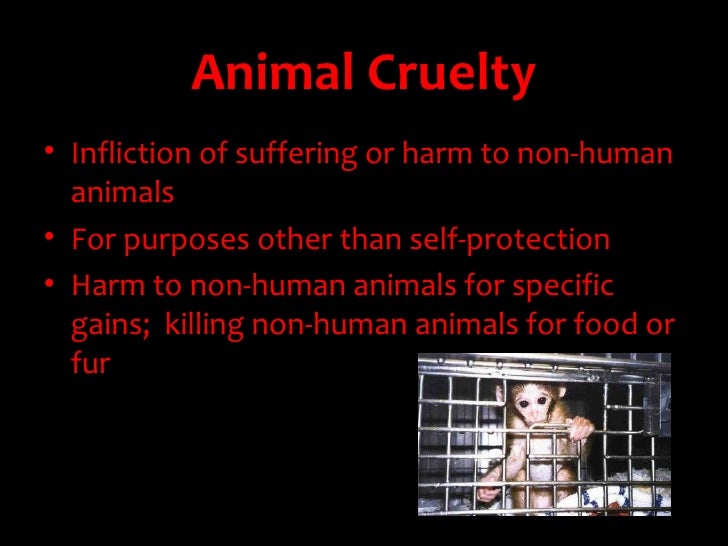At the heart of humane discourse lies a pressing issue: animal cruelty. The ramifications of this injustice extend beyond mere physical harm; they permeate societal values, ethical paradigms, and even environmental sustainability. Addressing this multifaceted dilemma requires a thorough analysis of what constitutes the most ethical response to animal cruelty. In examining this question, we must delve into the nature of compassion, the intricacies of ethical frameworks, and the roles we can play in instigating meaningful change.
The initial step in navigating the labyrinth of animal welfare is to comprehend the various forms of cruelty that exist. From outright violence to neglect and exploitation, the spectrum includes both overt acts, such as physical harm, and more insidious behaviors, contributing to a cycle of suffering. For instance, factory farming epitomizes structural cruelty, where animals are deprived of their basic instincts and subjected to deplorable conditions in the name of profit. Therefore, recognizing the breadth of animal cruelty is paramount in cultivating a more informed perspective.
Promoting awareness through education serves as an invaluable vehicle for change. By illuminating the reality of animal suffering—whether through documentaries, literature, or outreach programs—individuals can develop an empathetic understanding of the plight endured by countless animals. Such initiatives nurture a societal ethos that prioritizes compassion and respect for all sentient beings. However, to foster genuine care, education must transcend mere awareness; it must evoke a visceral response—an awakening that proves compelling enough to inspire action.
Having established awareness as a crucial component, it is essential to explore the ethical frameworks that inform responses to animal cruelty. Philosophical paradigms such as utilitarianism and rights-based theories provide contrasting viewpoints. Utilitarianism posits that the morality of an action hinges on its overall consequences; in this context, reducing suffering for the greatest number should be the ultimate goal. Conversely, rights-based theories assert that certain animals possess inherent rights, irrespective of their utility to humans. This tension between consequentialist and deontological perspectives necessitates a nuanced approach that respects both individual rights and collective well-being.
In order to cultivate a comprehensive response to animal cruelty, a multifaceted strategy must be employed. Legislative action is one of the most impactful forms of intervention. Advocacy for stricter animal welfare laws can curb abusive practices within various industries. Nevertheless, reform should not only focus on punitive measures but also emphasize preventive strategies, such as promoting humane alternatives in farming, research, and entertainment. This dual approach can facilitate a gradual shift in societal values toward a model rooted in empathy and care.
Job creation within the sector of animal welfare is also paramount. By supporting sanctuaries, shelters, and rehabilitation facilities, communities can create employment opportunities that align with ethical principles. Such roles not only provide a livelihood but also foster an environment where individuals are exposed to the importance of humane treatment. As they engage with animals that have suffered, these workers become natural advocates, turning personal experiences into persuasive narratives that urge others to consider their own impact on animal welfare.
Moreover, the intersection between animal cruelty and environmental sustainability cannot be overlooked. The intensive farming practices that contribute significantly to animal suffering also wreak havoc on ecosystems. Encouraging plant-based diets and sustainable farming practices can mitigate this dual crisis. By shifting consumer behaviors toward more ethical choices, individuals can collectively reduce both animal suffering and environmental degradation. That said, the consumer’s role is not passive; it is an active stance in advocating for ethical production practices.
Social media and digital platforms play an increasingly vital role in modern advocacy. They allow for the dissemination of impactful narratives that can galvanize support and provoke thought. Campaigns that highlight the realities of animal cruelty can move hearts and minds, making the issue more relatable and urgent. Tailoring messages to resonate with specific demographics can further enhance the effectiveness of such campaigns, ensuring they reach those who might otherwise remain indifferent.
In the realm of scientific discourse, research findings can serve as powerful tools in the fight against animal cruelty. Evidence-based studies that illustrate the cognitive and emotional capacities of animals can shift perceptions and policies alike. Scientific findings that establish an animal’s capacity for suffering can catalyze ethical reflection, urging society to reconsider its treatment of non-human beings. In doing so, the dialogue transforms into a call for action grounded in empirical understanding.
Ultimately, addressing the question of the most ethical response to animal cruelty requires an integrative approach that intersects education, ethical frameworks, advocacy, and personal accountability. Shifting societal perceptions is not an overnight endeavor; it requires a concerted effort from individuals, communities, and organizations alike. By fostering a culture of compassion and respect for all living beings, we can embark on a journey that not only alleviates suffering but also enriches our collective conscience.
In summary, responses to animal cruelty must reflect a deep understanding of the issue’s complexity. By merging awareness with action, ethical frameworks with personal choices, and advocacy with education, society can forge a path toward a more humane world. The imperative to act rests with each of us. Through the lens of compassion, we can redefine our relationship with animals and, in turn, one another.








